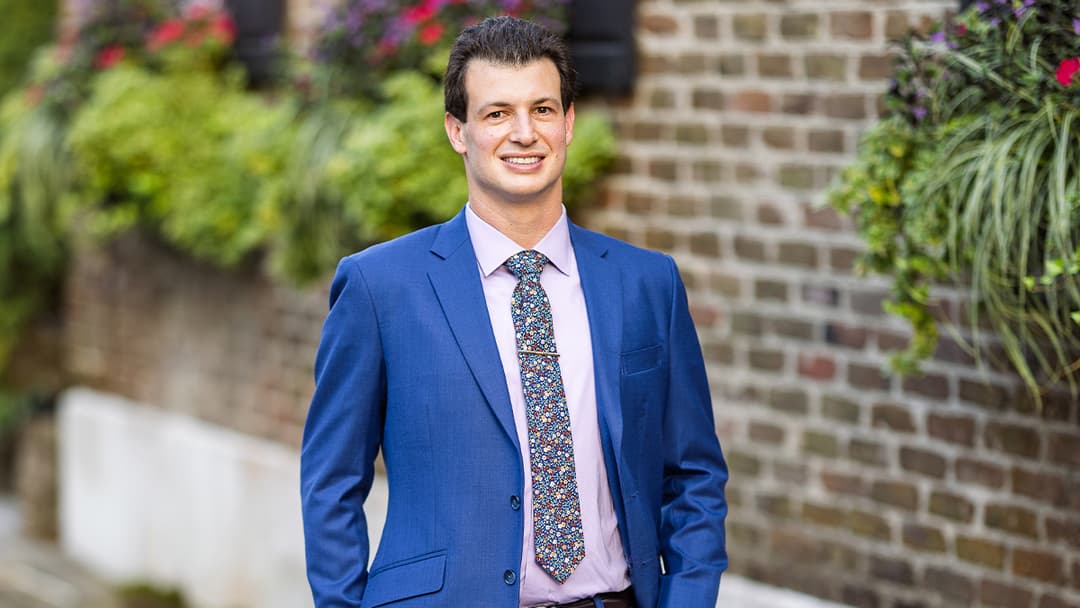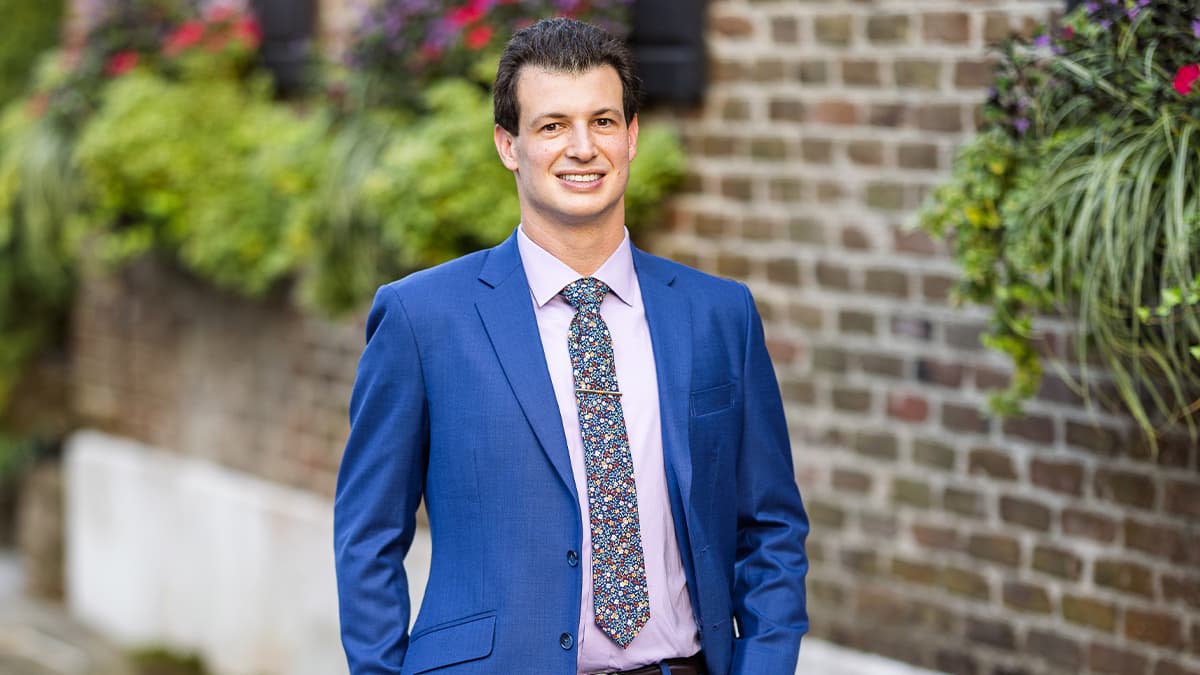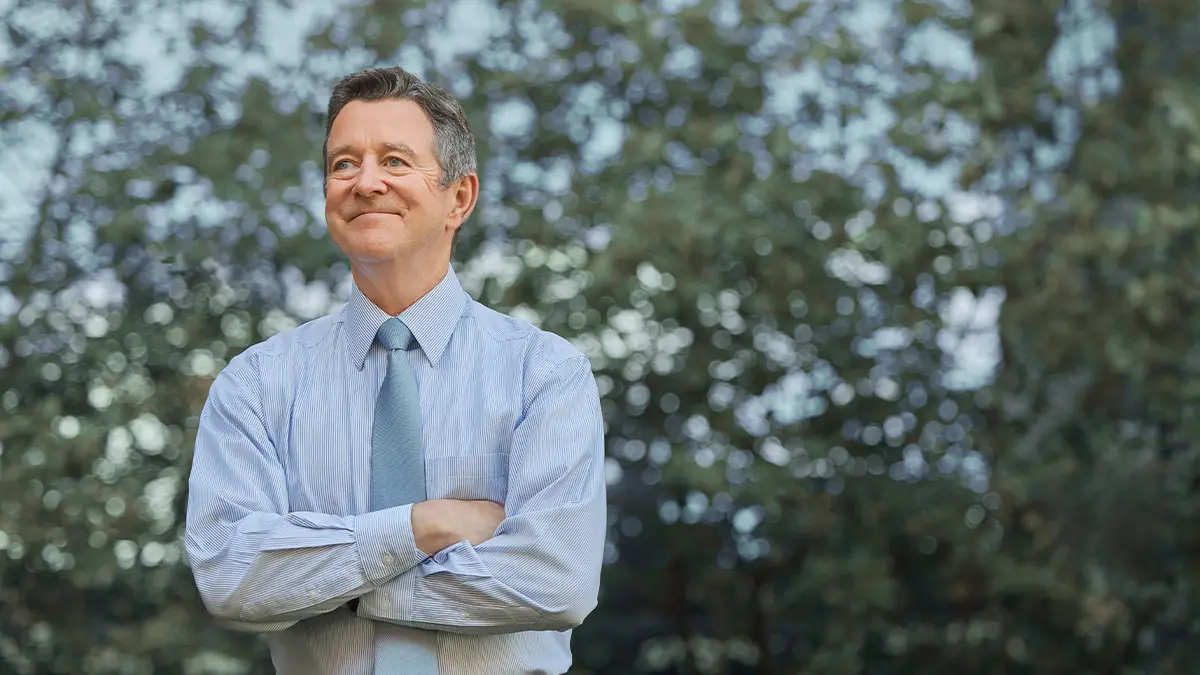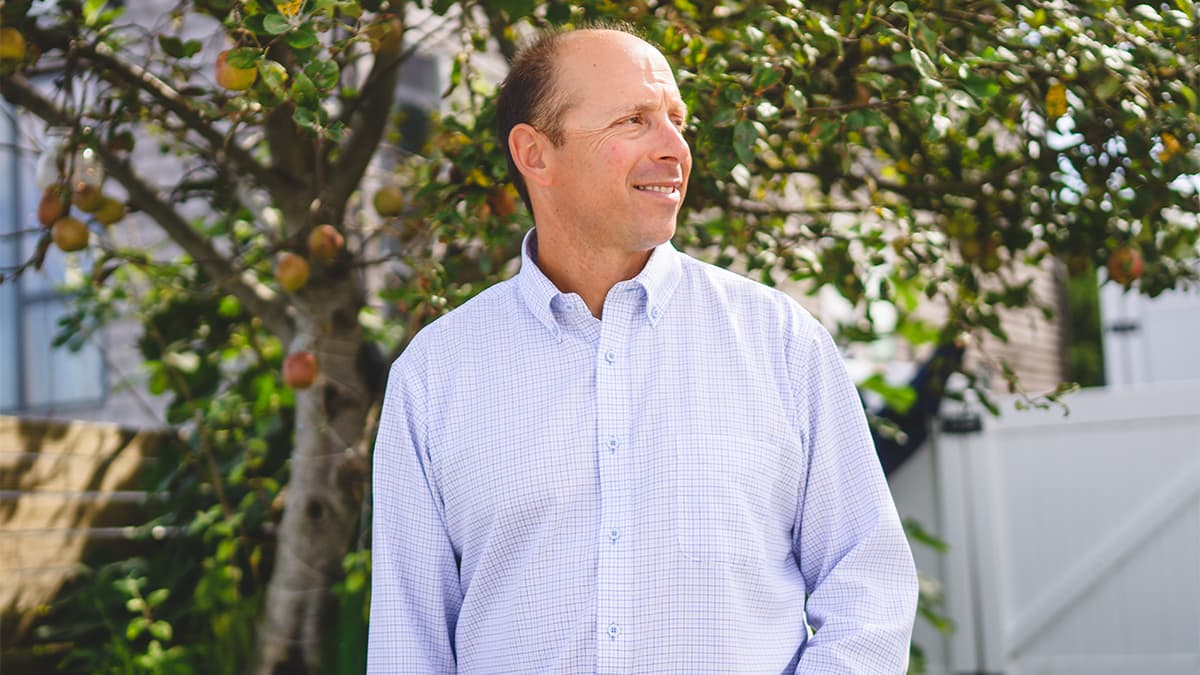From resident to attending physician
By Laurie Morgan December 1, 2025
Explore the journey from resident to attending physician, tips for success, and insights to thrive in your medical career.
Read full article

By Laurie Morgan December 1, 2025
Explore the journey from resident to attending physician, tips for success, and insights to thrive in your medical career.
Read full article
People have many thoughts on how to prevent physician burnout, and here are some of ours.
By By Laurie Morgan December 2, 2025December 2, 2025
It’s no secret: physician training involves a lot of sacrifice. So when that first job with a real physician salary begins, it can be both tempting to overspend and hard to know what to do with that significant increase in income. Some new physicians wind up making purchases or investments they regret—or finding themselves frozen with indecision.
Though your new financial circumstances will be undeniably positive, as someone who has gone from resident to attending physician, you may find yourself far less prepared for the change than, say, a freshly promoted business executive. Unless you’ve found time and had the inclination to learn on your own, personal finance “is really not something we’re taught in medical school,” says Cynthia Chen-Joea, MD, a family medicine physician in Norwalk, California, who also serves on the board of the American Academy of Family Physicians (AAFP).
Christopher Behringer, DO, a family medicine physician with Owensboro Health in Kentucky and a member of the Bureau of Emerging Leaders at the American Osteopathic Association, agrees. “The average medical student lives in debt,” he says. “Then they get into residency and are still living in debt. But when they get their first attending job, the pay increase may be more than five times. It’s a massive, drastic change for people.”
Luckily, physicians like Chen-Joea and Behringer who are further down the path are ready to share what they’ve learned, to help you avoid pitfalls small and large. PracticeLink sought advice from Chen-Joea, Behringer, and three other physicians from diverse specialties about what they’ve learned about money and how they’d handle it if they were starting their first jobs today.
Jared Ross, DO, an emergency medicine physician, healthcare consultant and entrepreneur in Charleston, South Carolina, says that some of the best advice he got was to live below his means—especially during the first few years of his career.
“When I was finishing up residency, the advice I got was: You’ve lived like a resident for three years. And, you know, for some people like neurosurgeons, they’ve lived like a resident for seven years. You can keep doing it. Continue to live like a resident. Live below your means.”
Living below your means for a while will give you time to figure out your money goals and strategy, and to learn the ropes of personal finance. It will also help you avoid costly mistakes you might later regret.
“Financial literacy is non-negotiable,” says Omar Khokhar, MD, a gastroenterologist with Illinois Gastrohealth, LLC, in Bloomington. “Now that you’re a top earner, it’s worth the time to become financially literate. You need to know the basics before you start making big decisions.”
Behringer adds, “You’re going to be a financial idiot for your first three to five years. That is just the truth of it. You don’t want to exit residency thinking you’re going to learn all the finances correctly on day one.”
After so many years of deprivation, newly hired physicians often find it tempting to indulge in a few luxuries right away. Such purchases can easily add up, and sometimes there are unexpected costs.
“We’ve had a lot of delayed gratification. Now we’ve suddenly come into money, so it’s tempting to spend it, to treat yourself. I think that’s where you have to be very careful,” Ross says. “I see a lot of people go right for the expensive sports car. But no one takes into account, what are your recurring costs with a Porsche? Your insurance is going to be sky high. Maintenance will be expensive too.”
Other practicalities are even easier to overlook, Ross says. “What if you work at a hospital that’s not in a great part of town? Do you want to be parking your flashy car there?” Plus, he says, the fun of a typical sports car may turn to frustration if you plan to have kids or pets or even just take road trips—or if you live in an area where winter brings snow. “I did residency in Detroit. One guy got a little Mazda sports car, and then he realized half the year he couldn’t even drive it without putting sandbags in the trunk,” he says.
Another unpleasant financial surprise: unexpected taxes, especially if you’re paid as a contractor, if you receive signing or productivity bonuses, or if you’re moonlighting.
“A couple of years into my career I would get a tax bill, and I would think, ‘How did this happen?’” says Vikram Rao, MD, radiologist and radiology department chair at Mercy Hospital-Lincoln in Missouri. He says the bills were not large enough to cause significant stress, but still big enough to get his attention. “They were manageable…at first. But I didn’t see them coming because I didn’t care to. I was burying my head in the sand.”
Rao says when you’re first starting out, so many things are competing for your attention that learning about financial matters like taxes seems like a lower priority. But now, as a mid-career physician, he sees the importance of taking taxes and similar financial matters seriously—and urges younger physicians not to wait to get started. Taxes will grow quickly with your income, and you’ll be glad you’re prepared.
“Once those tax bills start going up, that’s when I think some people like myself decide, ‘Now I’ve got to figure out how to reduce these things,’” Rao says. “Because as people say, there are two ways of getting rich: You can learn how to make more money, or you can learn how to save more money.”
While costly car purchases and surprise tax bills can lead to regrets, inconvenience and hits to the wallet, Behringer points out that jumping into a house and mortgage risks much more serious financial strain.
“Statistics show that 70% of physicians leave their first job within five years,” he says.
If you’re among that majority of newly employed physicians, owning a home will make leaving your first job more complicated. Besides the extra effort, stress and hassle involved in selling your home, you may need to sell it at a significant loss. And once you’ve decided to buy a home, fear of these consequences may also lead you to stay longer than you should in a job not right for you.
Behringer adds by not taking on new, ongoing payment obligations, you can potentially “crank down your student loan.” But more important than that, he says, is giving yourself guard rails during a time when you’ve suddenly got a lot of money but very little experience managing it.
Many aspects of personal finance will depend on your own individual goals and preferences, particularly further into your career. There are a few foundational steps financial experts and experienced physicians alike seem to agree are important to take early on.
When you’re just starting a new job and full of optimism, it’s easy to overlook the possibility of an unexpected loss of income. But layoffs or other extended unpaid leave can happen.
Setting aside money every month for an emergency fund will help you avoid going into (more) debt to meet expenses if something like this happens. It will also give you peace of mind.
“When I graduated, one of the first things my husband and I did was sit down with a financial advisor for a consult,” says Chen-Joea. “One thing the advisor said that we really took to heart was having three to six months saved in an emergency fund in case anything happened.”
Chen-Joea says that this early advice not only put her family on a more secure financial footing, but also helped her change her view of money. “One of the best financial mindset switches I’ve had as a physician was my relationship with money and getting coached on that. I really began to see money as a tool to support my well-being and my goal of being present in my life and having a good work/life balance.”
When establishing an emergency fund, experts note, the money needs to be both safe and easily accessible. That means parking it someplace like a savings account at a federally insured bank or credit union, where it can earn a little interest and you can withdraw it immediately without penalty.
Given your line of work, you likely already understand how much difference a generous health plan can make to your personal bottom line. You might be less aware, though, that insurance can be equally or even more important to your financial health and long-term goals.
Disability insurance is essential for any highly compensated employee, but perhaps even more so for physicians. Even seemingly minor disabilities could hinder, or even erase, your ability to practice, depending on your specialty and other factors. And if you have significant student loans, there are many scenarios in which those loans won’t be forgiven based on disability alone, such as when a disability undermines your income but doesn’t leave you entirely unable to work.
For these reasons, disability insurance should be obtained as early as possible in your career—preferably before you finish residency or fellowship.
“Physician disability insurance is so important, because if you’re unable to practice due to injury or illness, you’re still able to obtain a portion of your income,” says Chen-Joea. “I was lucky enough to have colleagues to advise me, so I got physician disability insurance through the AAFP when I was a third-year resident. Looking back, I think that was a great decision because it was much cheaper to buy it as a resident.”
Ross agrees, adding, “You would never buy a house without homeowners’ insurance. You shouldn’t even start medical school without disability insurance. It’s something you should think about when you start, because that’s when you’re signing that master promissory note and start to incur this debt.”
You’ll likely be offered disability insurance from your new employer. But as you evaluate offers, carefully consider the differences in coverage. If you’re not sure the coverage you’re offered is adequate, ask if it’s negotiable or if you’re able to purchase a supplement to the standard plan.
Rao adds you should ask about retirement coverage, too. “You may think, ‘Now I’ve got disability insurance, and that’s great. My income will be protected,’” Rao says. “But that may not continue to fund your retirement accounts.” Rao suggests asking your employer whether a rider to the disability policy that will maintain contributions to your retirement is included or available as an add-on.
Another key detail to look for: “own-occupation” or “own-specialty” coverage, which ensures you’ll receive benefits if a disability prevents you from practicing in your specialty, even if you’re able to work at something else.
Chen-Joea suggests paying close attention to the professional liability coverage your employer offers.
“Make sure your employer is providing you malpractice coverage—and tail coverage is something else to ask your employer about too,” she says.
Tail coverage is important to make sure you’re covered in the event you switch jobs. Malpractice claims can take months or even years to surface, but your new employer’s policy probably won’t cover any claims relating to your work elsewhere. Tail coverage ensures there’s no break in your protection.
Life insurance is another common employee benefit. If you’re single with no dependents, life insurance may not be a particularly important benefit (yet). But if you’ve got a family or are contemplating starting one sometime soon, you’ll want to be sure the coverage is adequate. And if the coverage is satisfactory now but you’ll need more after a marriage or having a child, you should ask about the process for increasing coverage after a qualifying life event.
At the very beginning of a lucrative career, with so many other delayed priorities to consider, retirement may not be near the top.
As Behringer puts it, “It’s very easy to not be concerned with it and to be more concerned with other things. Correct or incorrect, you might be thinking, ‘Hey, I make $400k a year. Why do I need to worry about retirement?’ You do need to worry about retirement. But the gut, initial knee jerk reaction instinct is ‘That is so far down my priority list.’”
Your employer will likely offer a 401(k) or similar retirement plan that includes matching contributions, whereby you’ll receive an additional amount for every dollar you contribute. If that’s the case with your job, consider contributing enough to qualify for the maximum match.
“If you’re a W-2 physician and your employer offers any sort of matching funds, that’s free money. If you don’t take advantage of the match, you’re leaving free money on the table,” Ross says.
Ross adds the ideal time to start contributing to an employer retirement plan is residency, because the match from your employer significantly increases your effective compensation. “You’re not making a lot of money, and especially if you look at it hourly, you’re making peanuts. But you should still take advantage of a match if there’s one, to get that free money. The only reason not to max out your match is, frankly, if you can’t afford the ramen noodles.”
Besides the extra money you’ll receive through the match, your contributions can be deducted from your pay pre-tax, so the impact on your take-home pay will be less than one-for-one. And when you move on from residency to employment, you can roll your retirement savings into an IRA (individual retirement account) that you control.
Another mathematical advantage: compounding. When a savings account or interest-bearing investment in a retirement account earns interest, the interest becomes part of the balance that earns interest, passively increasing the value of savings over time.
Starting with an employer retirement plan may make it easier to approach new territory like investing, especially since payroll deductions make the process relatively effortless.
There are psychological and career advantages to starting early, too. In the future, if you want to work in a non-clinical job or switch to part-time, building some retirement savings early will mean less pressure to earn and save down the road.
Another invaluable step toward meeting your financial goals (and avoiding regret) is setting a budget.
“A good budget really requires regular monitoring and adjustments,” Chen-Joea says. For example, as you meet some of your goals or as unexpected expenses arise, your allocation may need to shift. But the process doesn’t have to be overly complicated. “Some experts suggest the 50/30/20 budget method: 50% of your after-tax income goes to expenses, 30% goes to things you want, and 20% goes to savings,” Chen-Joea says. “It’s something my husband and I try to follow every month.”
Setting a budget that allocates a percentage of your pay to savings is a way to “pay yourself first”—a personal finance strategy of routinizing saving and investing habits. Doing so at the same time that your income dramatically increases is ideal, since you’ll be able to plan for future goals while still enjoying much more disposable income.
The burden of student loan debt is top of mind for many early-career physicians. With your newfound income, paying down more quickly than required becomes a possibility. Many physicians favor doing so, but only you can decide if it’s the right approach for you.
“I would really recommend paying off that debt as early as possible,” Rao says. “To me, that goes hand-in-hand with avoiding lifestyle creep. I used my first few bonuses and just knocked those loans out as soon as I could. That allowed me to do other things with my money, like investing. And it gave me psychological peace.”
Rao notes that while he recommends getting student loans off your personal balance sheet as soon as you can, some people are comfortable paying student debt off more slowly. “For me, the thought of having that at this point in my life, it just feels like I’m not financially independent if I’ve still got that big debt.”
Chen-Joea points out that financial experts sometimes classify student debt as “good debt,” since it’s money that’s borrowed to invest in the appreciating asset of your career (versus a depreciating asset like, say, a car). Also, the interest rate on student loans is typically relatively low. Depending on your interest rate and other market factors, you may prefer to invest the money you’ve earmarked for faster loan repayment in other ways.
“One of the things I’ve learned is that not all debt is the same,” she says. “I used to think that all debt should be paid off as quickly as possible. But there’s a big difference between high-interest credit card debt and low-interest mortgage or federal student loan debt. If you have a debt with a low interest rate, it might make more sense to invest extra income with a higher rate of return, like a high-yield savings account.”
Loan repayment offers could be part of your job decision, too. But Behringer points out that the value of loan repayment plans can be easy to overestimate. It’s important to fully think through the math before deciding.
In the case of PSLF (Public Service Loan Forgiveness), for example, you might find that your loan repayment ultimately won’t differ much from income-based repayment. If you’re considering a job primarily because of the possibility of retiring your loan more quickly, you may be unnecessarily sacrificing other factors that are important to you, like location or income.
Another factor to consider: Even if your total loan repayments would be lower with a PSLF-qualified job, the difference in salary might outweigh that advantage. And in any case, the effect of loan forgiveness might not have much effect on your lifestyle.
“The maximum forgiveness is likely to be about $100,000,” Behringer says. “And in the grand scheme of things for physicians, that’s chump change. It sounds weird to tell people who are used to living in debt that $100,000 is chump change, but that is chump change for a physician over 10 years.”
The math will likely differ by specialty, Behringer says. If you’re in a specialty that requires lengthier training and you’re able to do your residency at a PSLF location (with your residency years counting toward your PSLF requirement), you may benefit much more from that program.
Ross adds that because government loan forgiveness plans require 10 years of service, they may carry risk that political priorities could change in the future.
“There’s no right or wrong answer, but this is a calculated gamble. You don’t know what might change in terms of policy or administration,” he says.
Clear goals and plans are indispensable in helping you reach your money goals. But reaching them also depends on protecting your ability to earn the income your plans depend on over a lengthy career. That means learning to be more thoughtful about how you invest your time.
As Behringer says, during medical school and residency, you probably developed a reflexive habit of saying yes to almost any request. But once you’ve launched into your first job, it’s important to be more protective of your time.
“Residents are used to a pace of 60-, 70-, 80-hour weeks—plus volunteering, sitting on boards, doing research, etc. And what I’ve heard [from new attendings] is that it’s very common to be asked, ‘Do you want to sit on this board, or do you want to help with this or that?’ As a new employee, it’s easy to justify saying yes because you think ‘I’m being paid five times more than I was making in residency.’ But then you end up at back at 70 or 80 hours a week.”
Behringer adds, “My usual recommendation to new grads is, I don’t care what they offer you, take zero extra work outside your contract hours for the first six months to a year. You have to establish boundaries.”
With burnout an acknowledged risk for physicians, boundaries protect your time to recharge and enable you to pursue interests outside of work. That is crucial to your mental health—which, in turn, is crucial to thriving in your career for decades to come. Since physicians are in short supply in virtually every specialty and every part of the country, Behringer points out, there is also no reason to feel guilty about turning down extra, uncompensated work.
Khokhar adds throughout your career, you’ll likely have opportunities to earn income from outside sources—moonlighting, expert witnessing, consulting to start-ups, even personal passion projects. Sometimes, though, employment contracts have language that could restrict you from earning money outside your job—or even claim inventions you might come up with as the property of your employer.
“Have your contract looked at very closely [by your attorney],” Khokhar says. “…The best time to carve out those provisions is before you sign the contract. You’ll have maximum leverage then.” •



